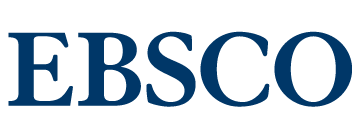مركز التعليم المستمر ودوره في تنمية الموارد البشرية والعلمية والبحثية في جامعة بغداد للمدة 1983-1990
Keywords:
مركز التعليم المستمر, دوره, تنمية الموارد البشرية, جامعة بغدادAbstract
The human element acquires growing and distinct importance in the conditions of comprehensive and sustainable economic and social development, given that the formation of human capital represents the basis of all development and development because it directs and controls material capital, which in turn constitutes the other element of the building elements, especially since the human element by its very nature works In one way or another, we make his material, scientific and intellectual productions and achievements influenced by him, if we do not say biased towards his formations, his personality, and his view of many of his interests. Hence, the importance of education and university education becomes clear in particular in the formation of scientific and productive human elements, whose role is distinguished in determining the size and quality of qualified human requirements. And capable of absorbing the requirements of development and carrying out its tasks and obligations, which makes university education a vital factor in the structural social changes in light of the needs of the state and society, which was achieved in the Center for Continuing Education at the University of Baghdad for the period 1983-1990. Despite this, the center continues to function properly It requires openness and knowledge of the experiences of others and their development at the level of continuing education. On the contrary, the center's activities become administrative activities. Do not comply with the requirements of scientific development and development of the state and society.
References
أولا: وثائق وزارة التعليم العالي، جامعة بغداد
وزارة التعليم العالي والبحث العلمي، جامعة بغداد، الكتاب الذهبي لتأسيس جامعة بغداد، مطبعة الجامعة، 1985.
ـــــ، جامعة بغداد، دليل جامعة بغداد 1986-1988
ـــــ ، جامعة بغداد، دليل جامعة بغداد 1985-1986، مطبعة الجامعة، بغداد، 1987.
ـــــ ، جامعة بغداد دليل المراكز البحثية والخدمية في جامعة بغداد، مطبعة الجامعة، بغداد، 1988.
ـــــ ، جامعة بغداد، دليل التعليم المستمر لعام 2003، طبعة الجامعة، بغداد، 2003.
ثانيا: المصادر العربية
احسان محمد الحسن، دور التعليم في التغييرات الاجتماعية البنيوية، (مجلة المأمون الجامعة)، العدد العاشر، كلية المأمون الجامعة، بغداد، 2003.
بشرى علي وهيب، الدول النامية بين التنمية المستقلة والتبعية، اطروحة دكتوراه غير منشورة، جامعة بغداد، كلية الادارة والاقتصاد، 1999.
عبد المحسن حمادة، التعليم الثانوي في الكويت، دراسة نظرية ميدانية واقتراح لتطوير التعليم الثانوي في ضوء احتياجات المجتمع الكويتي، مؤسسة الوحدة للنشر والتوزيع، الكويت، د.ت.
عبد علي كاظم المعموري، إشكالية التعليم العالي في العراق، الواقع والاتجاهات "حوار الفكر"، العدد السادس، المركز العراقي للبحوث والدراسات المستقبلية، بغداد، 2008.
محمود حميد خليل الجبوري، ظاهرة التخلف والنظريات المقترحة لحلها، بحث منشور، (مجلة كلية المأمون الجامعة)، العدد العاشر، بغداد، 2003.
مصدق جميل حبيب، التعليم والتنمية الاقتصادية، شركة المطابع النموذجية، توزيع الدار الوطنية للتوزيع والاعلان، دار الرشيد للنشر، الجمهورية العراقية، سلسلة دراسات، 1980.
منصور أحمد منصور، قراءات في تنمية الموارد البشرية، منشورات وكالة المطبوعات الكويتية، دار غريب للطباعة، القاهرة، 1976.
منصور حسين، كرم حبيب، التعليم وخطط التنمية، مكتبة الوعي العربي، القاهرة، 1970.
يحيى غني النجار، امال شلال، التنمية الاقتصادية، دار الكتب للطباعة والنشر، الموصل، 1991.
ثالثا: المصادر الاجنبية
J. H. Bill and H. J. Johnson, "Management and organization behavior, (new York, Johin Willey and Sense, 1970).
J. D. Dunn and C. S. Elvis, Manage mint of personal (Me Grow Hill Book Company, New York, 1972).
Downloads
Published
Issue
Section
License

This work is licensed under a Creative Commons Attribution 4.0 International License.
Copyright and Licensing:
For all articles published in Journal of Studies in History and Archeology, copyright is retained by the authors. Articles are licensed under an open access Creative Commons CC BY 4.0 license, meaning that anyone may download and read the paper for free. In addition, the article may be reused and quoted provided that the original published version is cited. These conditions allow for maximum use and exposure of the work.
Reproducing Published Material from other Publishers: It is absolutely essential that authors obtain permission to reproduce any published material (figures, schemes, tables or any extract of a text) which does not fall into the public domain, or for which they do not hold the copyright. Permission should be requested by the authors from the copyrightholder (usually the Publisher, please refer to the imprint of the individual publications to identify the copyrightholder).
Permission is required for: Your own works published by other Publishers and for which you did not retain copyright.
Substantial extracts from anyones' works or a series of works.
Use of Tables, Graphs, Charts, Schemes and Artworks if they are unaltered or slightly modified.
Photographs for which you do not hold copyright.
Permission is not required for: Reconstruction of your own table with data already published elsewhere. Please notice that in this case you must cite the source of the data in the form of either "Data from..." or "Adapted from...".
Reasonably short quotes are considered fair use and therefore do not require permission.
Graphs, Charts, Schemes and Artworks that are completely redrawn by the authors and significantly changed beyond recognition do not require permission.
Obtaining Permission
In order to avoid unnecessary delays in the publication process, you should start obtaining permissions as early as possible. If in any doubt about the copyright, apply for permission. Al-Adab Journal cannot publish material from other publications without permission.
The copyright holder may give you instructions on the form of acknowledgement to be followed; otherwise follow the style: "Reproduced with permission from [author], [book/journal title]; published by [publisher], [year].' at the end of the caption of the Table, Figure or Scheme.














